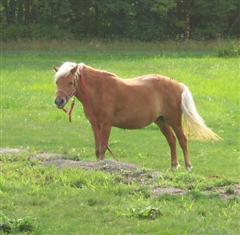Java Pony
Kumingan Pony
Fri, 15th November, 2024 - 3:09 am GMT
Sponsor Ads:

Alternative Name
Kumingan PonyBasic Info
With a slightly attractive head with long ears and lively, expressive eyes. Their necks are usually quite short and very muscular, and the withers are pronounced, the shoulders reasonably sloping, and their chests deep and wide. They tend to have long backs and a slightly sloping croup with a high tail-set, probably reminiscient of their Arabian ancestry. The legs of this breed are poorly formed but surprisingly strong. They have fine bones with poorly developed joints and long cannon bones, and their feet are hard and tough. The Java can be any color and stands between 11.2 and 12.2 hands high.
Health
N/AHabitat
N/ABehavior
Use : Harness, saddle with a slightly attractive head with long ears and lively, expressive eyes. Their necks are usually quite short and very muscular, and the withers are pronounced, the shoulders reasonably sloping, and their chests deep and wide. They tend to have long backs and a slightly sloping croup with a high tail-set, probably reminiscient of their Arabian ancestry. The legs of this breed are poorly formed but surprisingly strong. They have fine bones with poorly developed joints and long cannon bones, and their feet are hard and tough. The Java can be any color and stands between 11.2 and 12.2 hands high.Origin
IndonesiaHistory
The Java Pony, also called the Kumingan Pony, was developed on the Indonesian island of Java (hence their name) sometime in the 17th century. The Dutch East India Company played a part in the development of many different Indonesian breeds through their introduction of oriental horses. Their first factory was established on the island of Java during the 1500s and from that time on they have imported harness and pack horses. A large part of the Java's heritage is due to the crossing of local stock with Arabian and Barb horses that were imported.Common Foods
grassSponsor Ads:
The idea of a good society is something you do not need a religion and eternal puhishment to buttress; you need a religion if you are terrified of death --Gore Vidal
Java Pony
Coded by: BGID® | ALL RIGHTS RESERVED Copyright © 2000-2024
Disclaimer | Privacy | Report Errors / Contact | Credits









